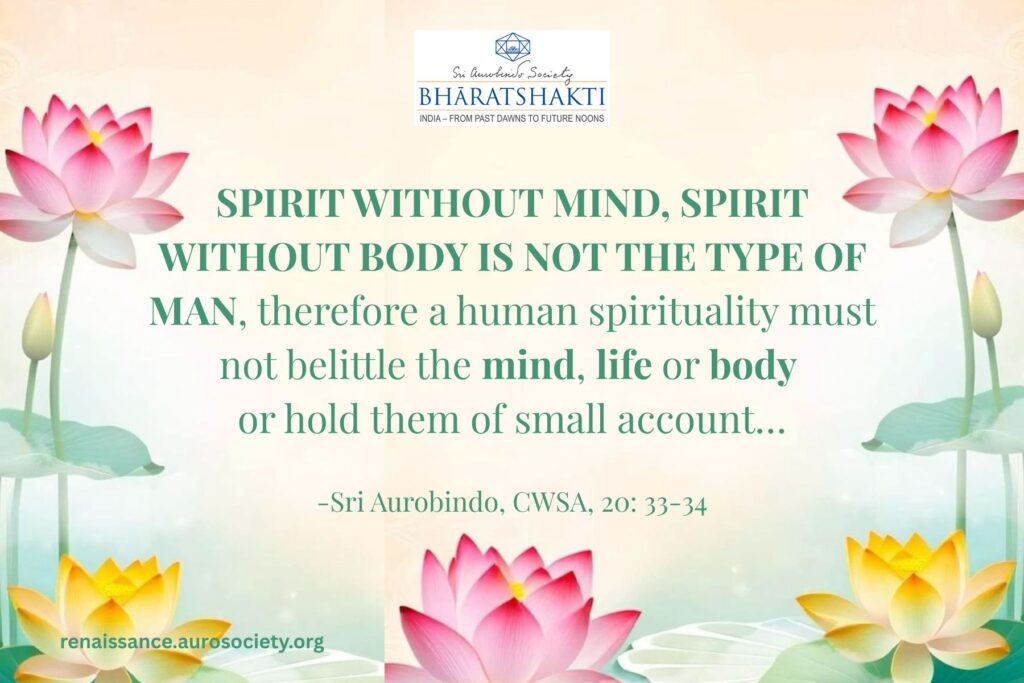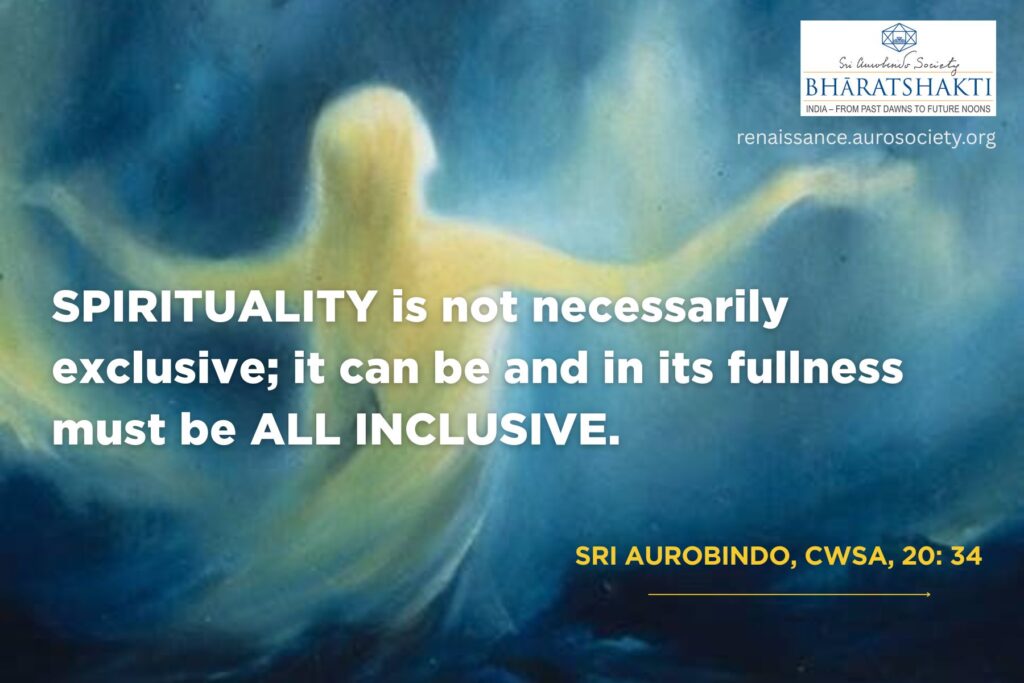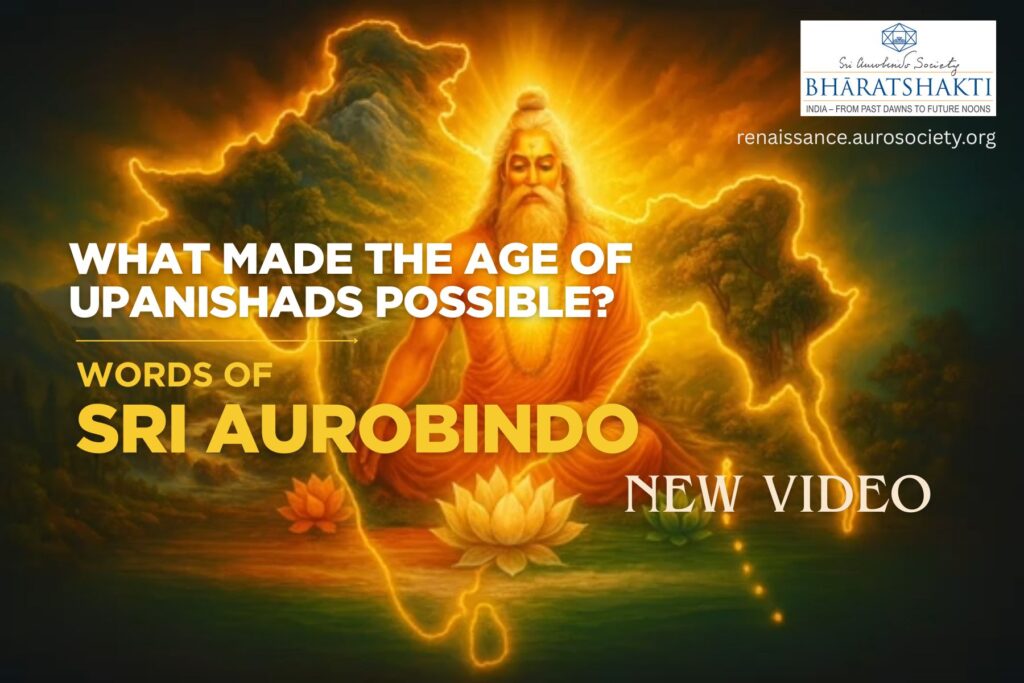Volume II, Issue 6
Author: Nolini Kanta Gupta
Editor’s note: It is common these days to refer to India as a civilisational-nation or civlisational-state. The main idea is that the truth of Indian nation is not different from that of Indian civilisation; in fact it is the unique character of Indian civilisation which has given a distinct stamp on the Indian nationhood which has survived all kinds of natural and man-made cycles of devastation and oppression. During all the downward phases of its continued existence, Indian nation persevered, and not only survived but actually thrived and re-emerged stronger giving newer forms to its timeless spirit.
What is behind this kind of immortality? What makes a nation immortal? Nolini Kanta Gupta explores these questions and more in this essay, originally titled ‘The Immortal Nation’, which draws relevant examples from world history and placing them in the light of the truth of the spirit. Presented here in two parts, the essay is also available in Collected Works of Nolini Kanta Gupta, Volume 1, pp. 238-246.
The nation in modern times is practically indestructible, unless it dies from within.
~ Sri Aurobindo, CWSA, Vol. 25, p. 310

PART 1
Gibbon’s Decline and Fall of the Roman Empire must have been the original source of the inspiration that moved later on Spengler and Toynbee and others to posit a life-line for nations and races and mark its various stages of growth and evolution. The general theory put in a nutshell would be like this: mankind is composed of groups or aggregates of individuals and each has a life-history of its own even like an individual human being, in other words, an inescapable cycle of birth, growth, maturity, decline and disintegration.
All groups—peoples; races, nations—have to pass through these destined stages, although, naturally, at different times and with a varying tempo. The view implies two conclusions or rather postulates: (1) that whatever is born must die, there is no resurrection or rejuvenation, neither in the individual nor in the collective life and (2) that humanity remains on the whole more or less the same, there is no global progress: there is no continued march forward towards a kingdom of heaven upon earth, even as there has not been a decline and deterioration from some Golden Age in the past.
Is this so, in point of fact or is it bound to be so, in point of theory? What are the facts?
There are at least two human groups or peoples extant that seem to point to a different conclusion. I speak of China and especially of India. Egypt and Greece and Rome, the Minoans, the early Mesopotamians had their day. They rose, they lived, they died and are no more. But India and China, although almost contemporaneous with any of those earliest civilisations, have not vanished; they continue still today.
In respect of India at least it cannot be said that she is today totally different from what she was in her Vedic epoch or even in her Harappa and Mohenjo-daro days. But as we know, modern Egypt is not the Egypt of the Pharaohs, nor the Greece of Venizelos the Greece of Pericles.
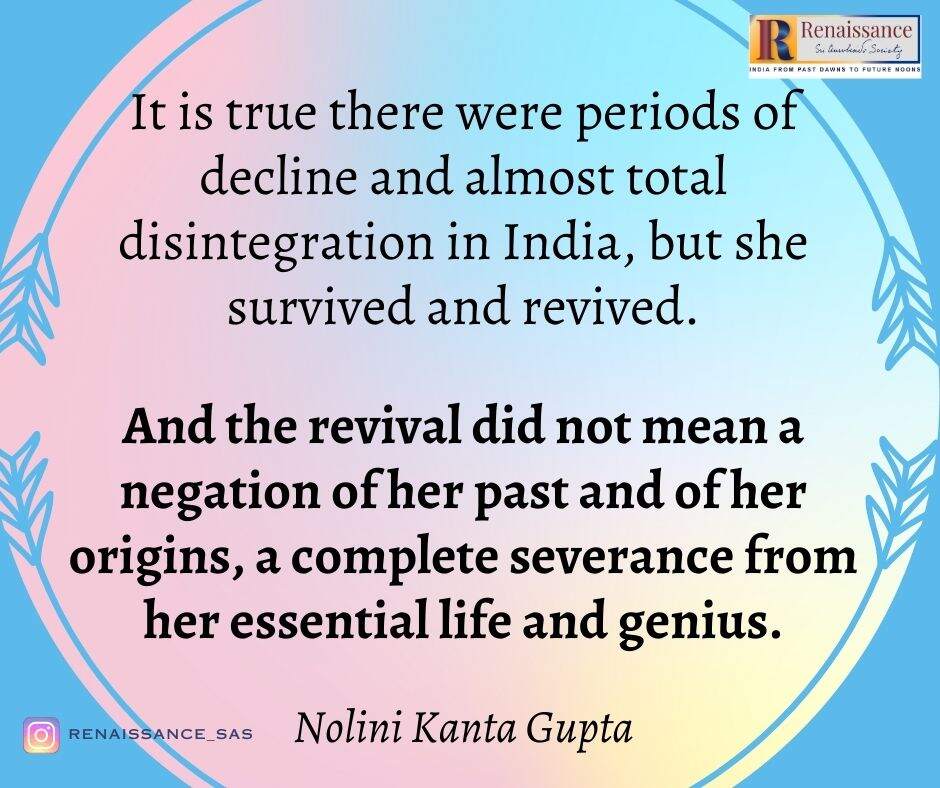
It is true there were periods of decline and almost total disintegration in India, but she survived and revived. And the revival did not mean a negation of her past and of her origins, a complete severance from her essential life and genius. The spirit and even the fundamental outline of the form in which that spirit moulded itself did not change, they remained constant and the same. It is said the Varna and the Ashrama that give the characteristic structure of Indian society even today characterised also the Vedic society; and the system of village autonomy that survives even today ruled Harappan India also.
It has also been pointed out that the administrative system pursued by the British in India was nothing brand new imported from outside, but only a continuation, with minor adaptations, of the system consolidated by the Mughals who again had taken it up from the Mauryas; a system initiated perhaps by still earlier legislators and builders of Indian polity. Mussolini of twentieth century Italy is in no way related to Cato or Julius Caesar of ancient Rome, but Sri Ramakrishna or Sri Aurobindo is a direct descendant of the Vedic Rishis.
What is the cause of this strange longevity or stability that India or China enjoys? Whence this capacity to renew life, to rejuvenate the past that survives and persists? Before dealing with this question let us turn for a while to another curious phenomenon: which is allied to it and may throw some light upon it.
Life-span of Peoples
It is about the life-span of peoples. The life-span of peoples is not uniform: it differs with different peoples and differs considerably. The Spanish or Portuguese hegemony in modern Europe was after all rather brief—a matter of one century or two—in comparison with the lease enjoyed by Rome or Greece. Indeed it might seem that the older the nation the longer it lived.
Take, for example, the oldest nation recognized as such in history, Egypt; her life-span is to be measured not by centuries but by millenniums. The Hellenic civilisation that succeeded the Egyptian did not last as long and yet it lasted more than its own successor, the Roman, did.
How was it then the more ancient people resisted more successfully the forces of decline and disintegration? What was it that made the later and younger nations less successful in the battle of life?
Another fact. The Asiatic peoples or nations endured generally longer than their European brethren.
I have spoken of India and China, I may now refer to Persia, the old Persia that has a glorious story to tell for more than a thousand years (from Cyrus to the last of the Sassanids) ending or suffering a sea-change with the advent of the Arabs. The Arabs themselves and also the Hebrews were likewise long-lived peoples, although both of them have this especial characteristic that theirs is not a land-locked civilisation, that is to say, they were not peoples wedded to their own land, a mother-country of their own, theirs was a peripatetic genius which went abroad and sought to make their own or make themselves over to and enter into other countries and other cultures. Perhaps this is their way of securing a long life.
The reason for a long life must necessarily be in the mode of life itself.
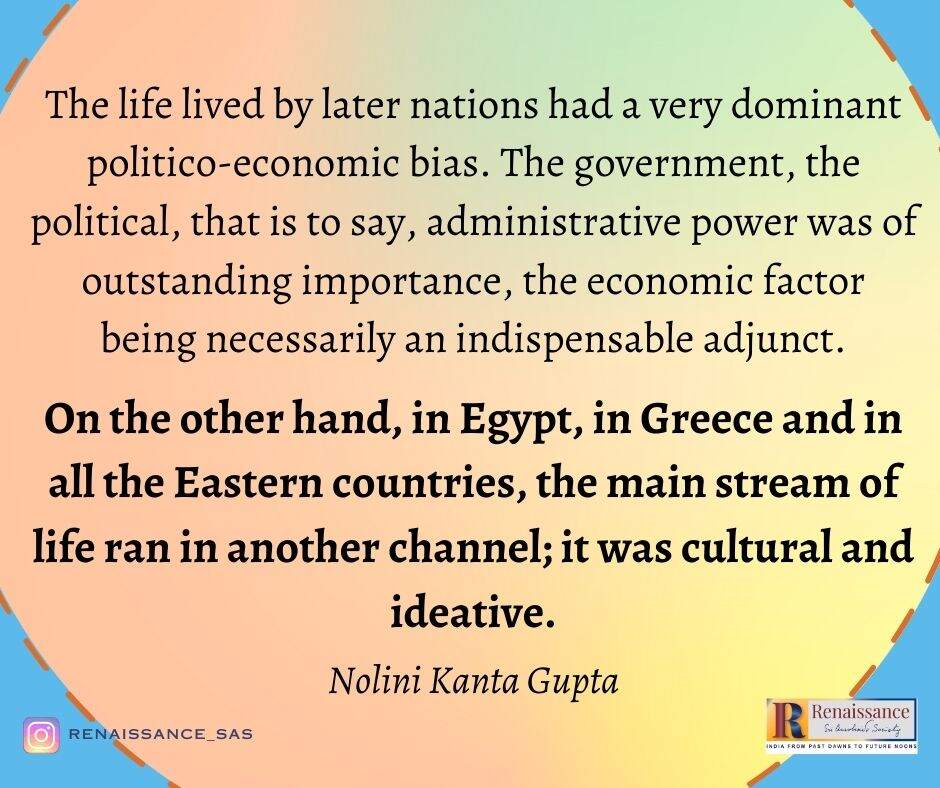
The life lived by later nations had a very dominant politico-economic bias. The government, the political, that is to say, administrative power was of outstanding importance, the economic factor being necessarily an indispensable adjunct.
On the other hand, in Egypt, in Greece and in all the Eastern countries, the main stream of life ran in another channel; it was cultural and ideative. What remains of Greece or even of Egypt, what the Eastern countries carry still here and there in a living manner is that element—that which is immortal in mortality, as the Vedic Rishis say. The stone monuments bear a significance and a message even to us, because they embody and point to what moved, inspired and fashioned the consciousness, the inner life of these races. And it is that that outlives the glories of governments and rulers.
What happened usually in ancient times among more ancient peoples, and in Asia generally, happened with characteristic emphasis in India.
The physical vastness of China or of India, their teeming populations—much greater than any single nation or country—are sometimes adduced as reasons of the stability or longevity of these two Asiatic peoples. But I suppose Matthew Arnold’s graphic vision of the situation—in his famous lines about the dreaming East and the legions thundering past—hits the mark closer, although his was a disparaging, not an appreciating note. That is to say, here in India the king, the administrator, the political or economic factor were superficial limbs of the society, they lay at the periphery of the people’s consciousness. Wars and revolutions did not affect or touch essentially the life-movement.
Here was a people terribly concerned with inner values: these were much more important than an occupation with problems of food and lodging. We are all familiar with the poignant cry of an Indian woman of the Vedic age: what shall I do with the thing that does not give me Immortality?
The truth then is this: the stronger the inner life a nation builds up and organises, the longer it lives and the greater the power it acquires to revive when it falls for a time into decline. Naturally, a good deal depends upon the nature and quality of this inner life.
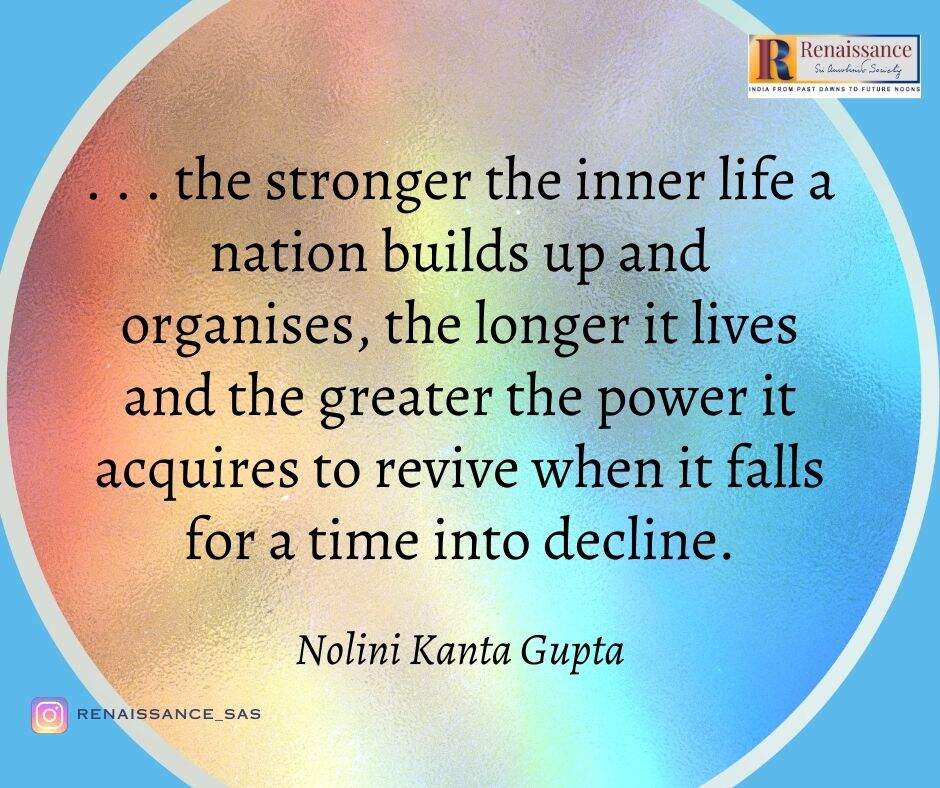
There are certain types of inner life which mean the very source of life, there are others that are only secondary sources. Ancient Greece or even modern France has had a well-developed inner life, but this inner life was very strongly wedded to and welded into the outer life, it lay at least at one remove farther from the true source of life.
Ancient Egypt less intellectual, less mentally cultivated, was in contact with the occult, the subliminal base of life, more potent and dynamic springs of consciousness. This was the cause of Egypt’s greater longevity and some capacity of renewal. The older people generally lived in, or at least, were in living contact with principles of existence more fundamental and therefore more enduring. The gods of the mind and of the inner vital enjoy a longer immortality than the deities that rule man’s outer life and body.
Viewed from this standpoint India stands as a case sui generis. She did not stop short satisfied with the lesser gods. She aspired for the highest One, the supreme spiritual reality and it was her mission, her destiny, to foster it and keep guard over it for the sake of humanity. Whatever the outer vicissitudes, she maintained throughout the inner continuity of her spiritual life and realisation.
That is where she drank of the nectar of immortality and that is how she could always revive and renew herself after a period of decline and almost disintegration, because she possessed the mystery of the self.
Other peoples were busy about many other things important or unimportant in some measure, but here was a race that never forgot the one thing needful. India of today, we repeat, is fundamentally and essentially the India of the Vedas, even in a more literal sense than that China of Mao-tse-Tung (or Sun-yat-Sen) is the China of Lao-tse.
A race dies out altogether or continues to lead a superficial mechanical existence, that is to say, vegetates as an inchoate mass, when it knows to live only in its body, confined only to the demands of the barest physical necessities.
The life of a race gains a meaning and a new vitality when a higher light and aspiration inspire and move its spirit; when a deeper and finer sensibility, a nobler ambition stir its affections, when a superior intelligence and understanding illumine its mental horizon, its lease of life is increased by that and also its power of recuperation and renewal. And the further it enters into these basic constants of existence the greater that power of rejuvenation[i].
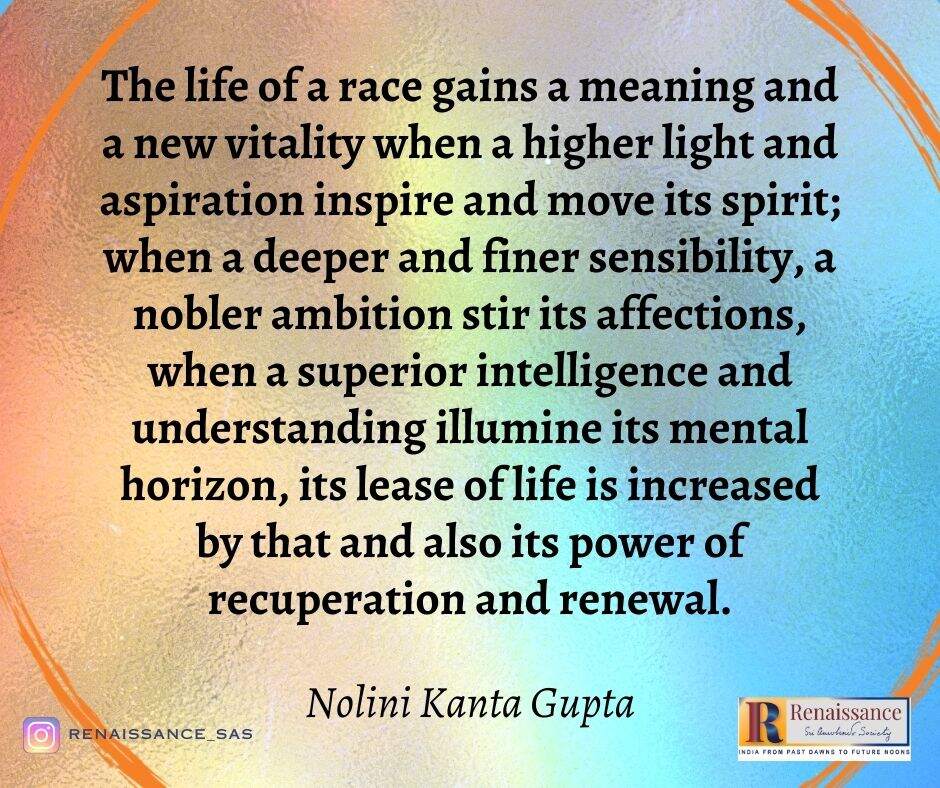
Notes
[i] Toynbee also speaks of the possibility of, national regeneration—freedom from the cycle of decline and death—through religion (although he limits religion to the Christian faith).
~ Collected Works of Nolini Kanta Gupta, Vol. 1 , pp. 238-246

CONTINUED IN PART 2
~ Design: Beloo Mehra

